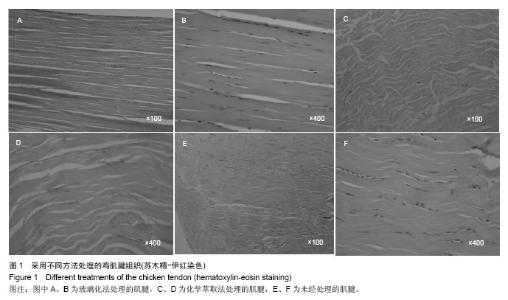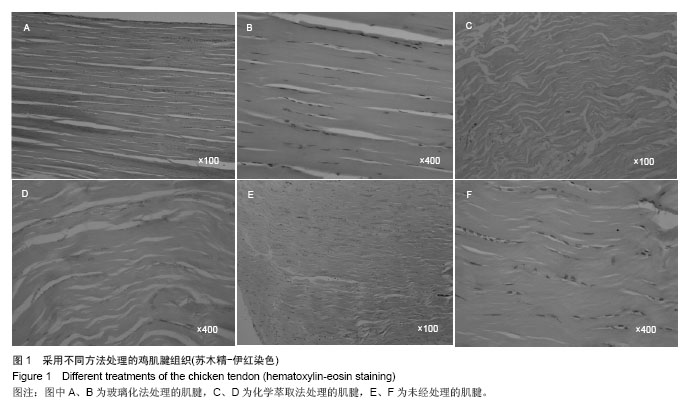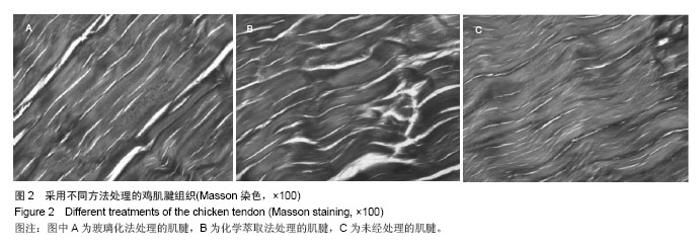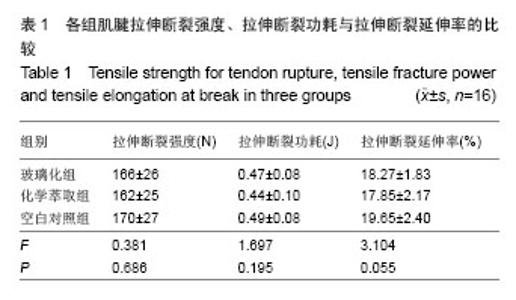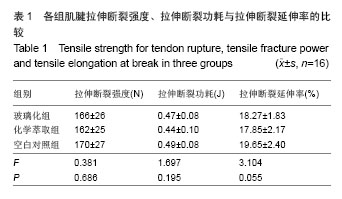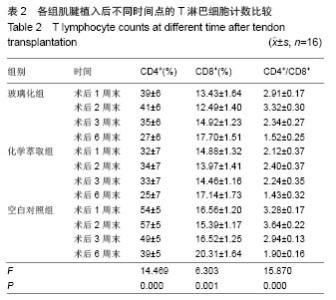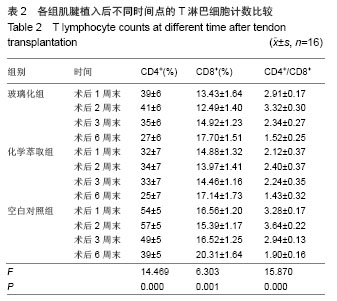| [1]徐宁.以纳米羟基磷灰石/胶原为基元的仿生人工骨制备与性能研究[D].第二军医大学,2013.
[2]赵丹.雷公藤甲素、人羊膜在同种异体肌腱移植修复肌腱缺损中的作用[D].河北医科大学,2011.
[3]董静静.自凝固磷酸钙/纤维蛋白协同诱导成骨机制的研究及成骨材料的研制[D].第四军医大学,2013.
[4]刘伟.脱细胞同种异体肌腱复合重组人骨形态发生蛋白-2重建兔前交叉韧带的实验研究[D].第二军医大学,2012.
[5]张乃丽.新型可塑形同种骨修复材料的制备及相关研究[D].南方医科大学,2013.
[6]许伟.预张力水平对异体肌腱性能的影响[D].河北医科大学, 2012.
[7]陈晓.胚胎干细胞与蚕丝—胶原支架促进肌腱再生的研究[D].浙江大学,2010.
[8]刘玉艳.N,O-羧甲基壳聚糖/纳米β-磷酸三钙复合材料的制备及其生物学性能的基础研究[D].吉林大学,2011.
[9]聂磊.高活性多孔磷钙基载药复合骨支架的制备及性能研究[D].华中科技大学,2013.
[10]杨勇.ADSCs复合PRF修复家兔耳软骨缺损的实验研究[D].第四军医大学,2013.
[11]杨亮.细菌纤维素增强复合材料制备、表征及对蛋白药物承载研究[D].东华大学,2013.
[12]黄淼俊.含锶磷酸钙中空微球的生物模板法仿生合成研究[D].华南理工大学,2013.
[13]蒋涛.大鼠脱细胞脊髓支架的优化改性及相关特性研究[D].第三军医大学,2013.
[14]唐正海.新型磁性骨水泥制备及其体外细胞生物相容性研究[D].北京中医药大学,2013.
[15]张东宪.聚对苯二甲酸乙二醇酯人工韧带支架材料的空穿编织和力学性能分析[D].第四军医大学,2012.
[16]唐林俊,陈浩贤,崔太安.等.同种异体肌腱移植长期疗效观察——附24例10年随访[C].中国中西医结合学会,2012.
[17]柏树令,应大君.系统解剖学[M].北京:人民卫生出版社,2008:67.
[18]张林,李敏.肌腱疲劳的生物力学研究进展[J].体育学刊, 2008, 15(1): 109-112.
[19]张文君,柴殿波,于建农.肌腱组织工程的研究进展[J].医学综述, 2008,14(10):1452-1454.
[20]窦勃,张英泽,田德虎,等.雷公藤甲素对同种异体肌腱移植修复鸡肌腱缺损的作用[J].中国修复重建外科杂志, 2012,26(7): 869-873.
[21]吴富章,卜海富,赵刚,等.玻璃化法保存异体肌腱移植的实验研究[J].安徽医科大学学报,2008,43(1):20-23.
[22]孙燕琨,张友乐,李祥,等.异体肌腱移植术后粘连原因分析[J].中国修复重建外科杂志,2008,22(3):346-348.
[23]李秀芬,王洪东,李立.肌腱的生物学特性及缺损后修复材料的性能评价[J].中国组织工程研究与临床康复,2010,14(3): 525-528.
[24]潘乐,李世光,左健.同种异体肌腱移植修复运动损伤:免疫排斥反应及降低免疫排斥反应的方法[J].中国组织工程研究与临床康复, 2011,15(53):10043-10046.
[25]陈瑞光,王文,叶伟雄.关节镜下同种异体肌腱移植修复膝交叉韧带早期排斥反应的观察[J].器官移植,2011,2(4):213-216.
[26]邓启烈.运动性肌腱损伤同种异体移植和外科修复的生物力学特征[J].中国组织工程研究,2012,16(18):3403-3406.
[27]唐恒涛,王闯建,严旭,等.同种异体肌腱移植修复跟腱断裂[J].中国组织工程研究,2013, 17(31):5626-5632.
[28]胡成栋,张伯勋,刘曦,等.玻璃化法保存同种异体肌腱移植材料的可行性[J].中国组织工程与临床康复,2011,15(12):2175-2178.
[29]解强,李方祥,周敬滨,等.带线锚钉辅助下同种异体肌腱重建运动员肩喙锁韧带12例报道[J].中国骨与关节损伤杂志, 2013, 28(11): 1072-1073.
[30]陈晓敏,白洁,颜国华,等.羟基磷灰石/柞蚕丝素(HA/TSF)骨仿生纳米纤维的生物学性能研究[J].现代生物医学进展, 2013, 13(33): 6466-6470. |
